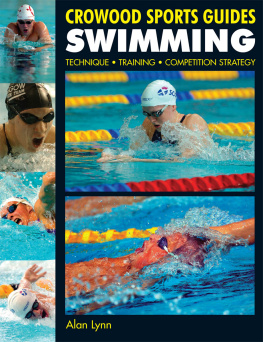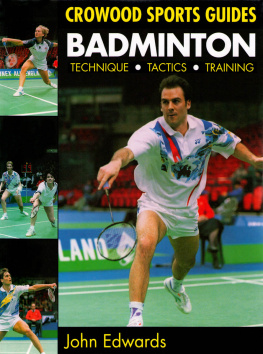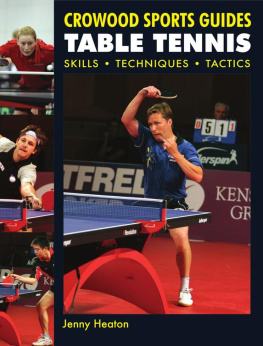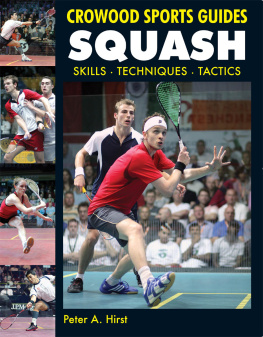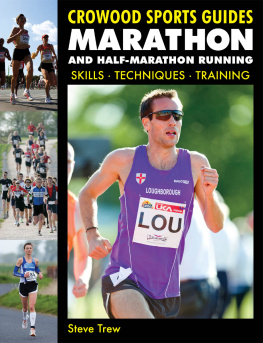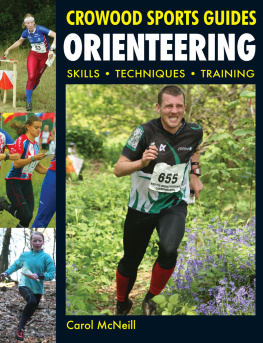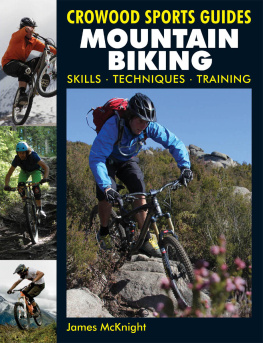Contents
Landmarks
CROWOOD SPORTS GUIDES
SWIMMING
TECHNIQUE TRAINING COMPETITION STRATEGY
Alan Lynn

THE CROWOOD PRESS
First published in 2006 by
The Crowood Press Ltd
Ramsbury, Marlborough
Wiltshire SN8 2HR
www.crowood.com
This e-book first published in 2014
The Crowood Press Ltd 2006
All rights reserved. No part of this publication may be reproduced or transmitted in any form or by any means, electronic or mechanical, including photocopy, recording, or any information storage and retrieval system, without permission in writing from the publishers.
British Library Cataloguing-in-Publication Data
A catalogue record for this book is available from the British Library.
ISBN 978 1 84797 861 5
Dedication
To my wife Jacqueline and son Cameron, with thanks for their patience and understanding in the long absences upstairs during the writing of this book.
Acknowledgements
The author and publishers would like to thank the following for their help in the production of this book: Brian Pitkin (for the photographs, except where credited otherwise, and except for the part-openers, which are Steve Lindridge iDEAL iMAGES (Scotland)); The University of Stirling (for the use of the National Swimming Academy pool); and Stirling ASC (the swimmers).
CONTENTS

PREFACE
Swimming is a popular activity, at once a sport, a recreational pursuit and a lifesaving skill. It is a well-documented and widespread activity in most countries across the world. Famous swimmers are household names and participating in swimming is second nature to millions. However, there is still a need for many to fully understand the sport, and to improve their techniques and their competitive performances.
Early references to the activity are to be found in the Old Testament, and the first organized national competition is known to have taken place in England in 1869. As a measure of the progress of swimming and its global appeal, the World Swimming Championships of 2005 had more than 2,000 competitors from 157 countries participating in such diverse activities as Swimming, Water Polo, Diving, Open-Water Swimming and Synchronized Swimming.
Recent Government policies relating to education, such as the National Curriculum in England and Wales, have led to a strong lobby for swimming to be included as an entitlement for all children. At the most basic level, every child should have the opportunity to learn a potentially lifesaving skill, and to become familiar with an activity that can provide lifelong enjoyment.
The aim of this book is to improve the swimming ability of all readers, young or old, novice or expert. Through a series of chapters that are easy to read and understand, the sport of swimming is explained and the strokes developed, from beginner stages through to advanced competition level. Advice on training, racing and coaching is given, with sample sessions and race strategies from champion swimmers and coaches.

CHAPTER 1
THE SPORT HISTORY, STROKES AND RULES
History
The English are credited with the development of swimming as a competitive sport. By the mid-nineteenth century (around 1840), regular swimming competitions were being held in Londons six artificial pools, organized by the National Swimming Society in England. As the sport grew in popularity, many more pools were built, and when a new governing body, the Amateur Swimming Association (ASA), was formed, in 1880, it numbered more than 300 member clubs.
The first modern Olympic Games in 1896 incorporated only four swimming events, three of them Frontcrawl (more commonly known today as Freestyle). The second Olympics, in Paris in 1900, included three highly unusual swimming events: one used an obstacle course; another was a test of underwater swimming endurance; and the third was a 4,000m event, still the longest Olympic swimming event ever. None of the three was ever used in the Olympics again. The first-ever Olympic swimming event was a 100m Freestyle race between three Greek sailors across the Bay of Zea, which started with the rivals jumping from rowing boats. The winner was Ioannis Malokins in 2 minutes and 20 seconds. The Backstroke event was introduced in Paris (1900) and Breaststroke surfaced as an Olympic stroke in 1908 at the London Games. Almost half a century passed before a fourth stroke event, Butterfly, was added, in 1956 at the Melbourne Games. The first indication of the modern race programme emerged in St Louis, in 1904, yet it was still only men competing at this time. For a variety of reasons, women were excluded from swimming in the early years of the modern Olympic Games, and they raced for the first time only in 1912, in Stockholm. In 1896 and again in 1900, women were not permitted to participate because the developer of the modern Olympics, Baron Pierre de Coubertin, believed in the commonly held assumption of the Victorian era, that women were too frail to engage in competitive sports.
Swimming soon became one of the glamour events of the Olympic Games and today a ticket for an Olympic swimming session is a much sought-after commodity. Exposure through the sport opened up significant opportunities to a number of swimmers, such as Duke Kahanamoku (USA), who won the 1912 and 1920 Freestyle sprint titles. Johnny Weissmuller, the American who became the first to swim under a minute for the 100m Freestyle, is perhaps the most famous pre-Second World War swimmer. His sporting success attracted the attention of Hollywood producers, and he went on to star in the early Tarzan movies. Another film star to start his career in the pool was 1932 Olympic champion Buster Crabbe (better known later as Flash Gordon). Crabbe got his passport to Hollywood by taking the 400m Freestyle title, winning by what he described as the tenth of a second that changed my life.
More recently, Mark Spitzs seven gold medals at the 1972 Munich Games assured his legendary status as a worldwide sporting superstar and, at the 2004 Athens Olympics, American Michael Phelps and Australian Ian Thorpe confirmed their positions as global sporting icons. Incidentally, at those same Athens Games, the Dutch swimmer Pieter Van den Hoogenbands winning time of 48.17 seconds for the Mens 100m Freestyle was more than 1 minute 30 seconds faster than Malokins efforts in that first-ever Olympic swim.

